By Dan Weisz
Many birds fly south for the winter and in Tucson we see our fair share of these “snowbirds”. Among the many wintering species, ducks stand out to me. Normally, Tucson and the Sonoran Desert are not environments where you would think ducks are common. I don’t see a lot of “ducks among saguaro” greeting cards in gift shops. However, if you happen across any pond in southern Arizona at this time of year, whether natural or man-made at parks or golf courses or subdivisions, you are going to see ducks. I’ve shared a number of duck photos in recent emails but today’s collection shows ducks in motion.
Mallards are called dabbling ducks. Here is a female mallard in a typical feeding pose, bottoms-up and reaching down in the water to eat anything edible within their reach. Although mostly a plain looking duck, female Mallards do have bright blue secondary wing feathers
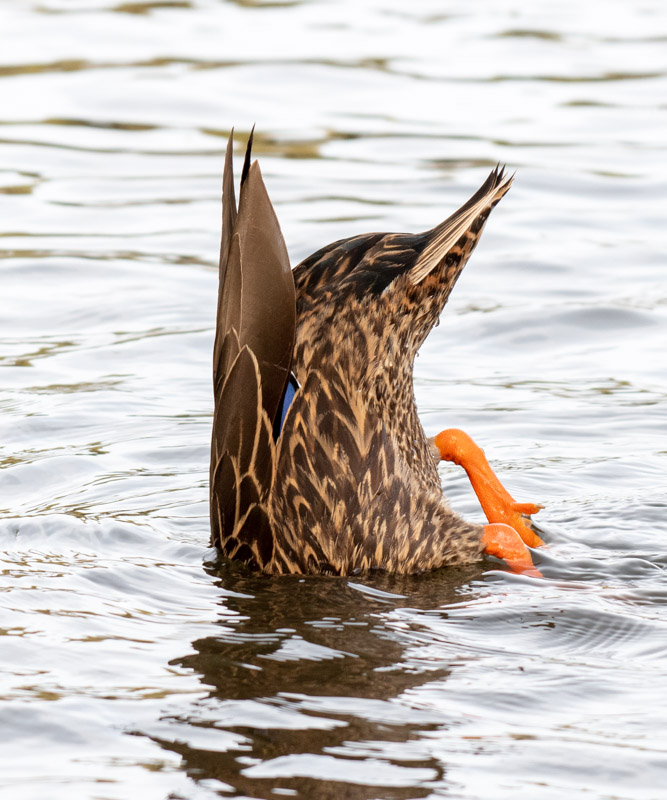
The female Goldeneye ducks were a special treat to see. These ducks dive and then search underwater for their food. Here is one duck on her way under, kicking hard with her webbed feet to propel her on her journey!
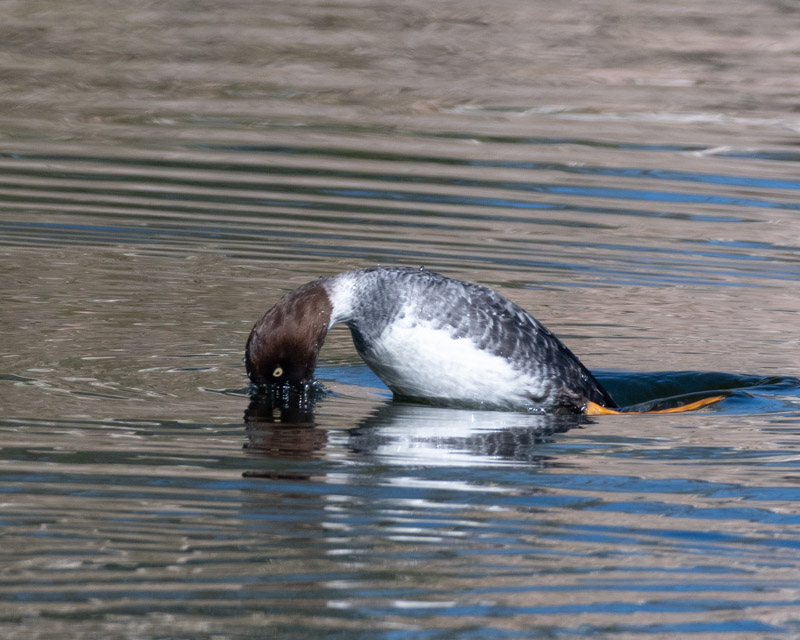
Northern Shovelers are dabbling ducks. They will often swim in rapid, tight circles with their heads in the water. With this action, they create a funnel effect in the water helping to lift food from lower surfaces up to where the ducks are swimming.
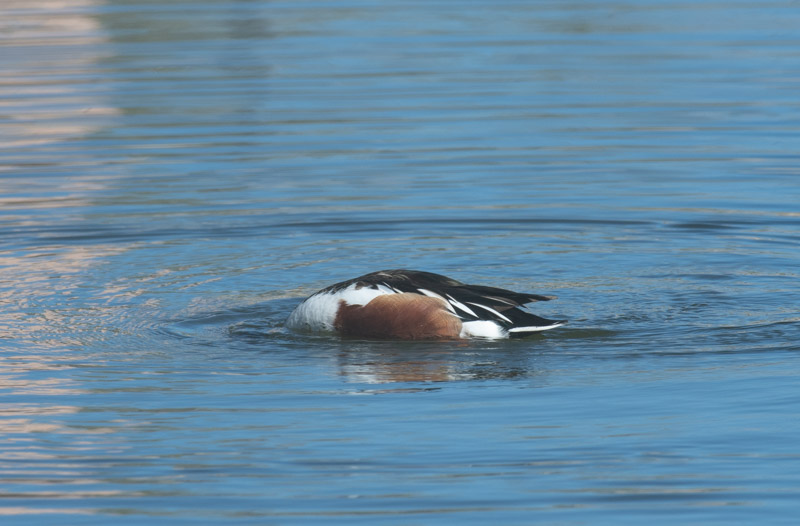
An American Wigeon is coming in for a landing on water. (Hhmmm. Is it still called a landing if they don’t land on land?) American Wigeons used to be called Bald Pate ducks for their apparently bald-looking head.
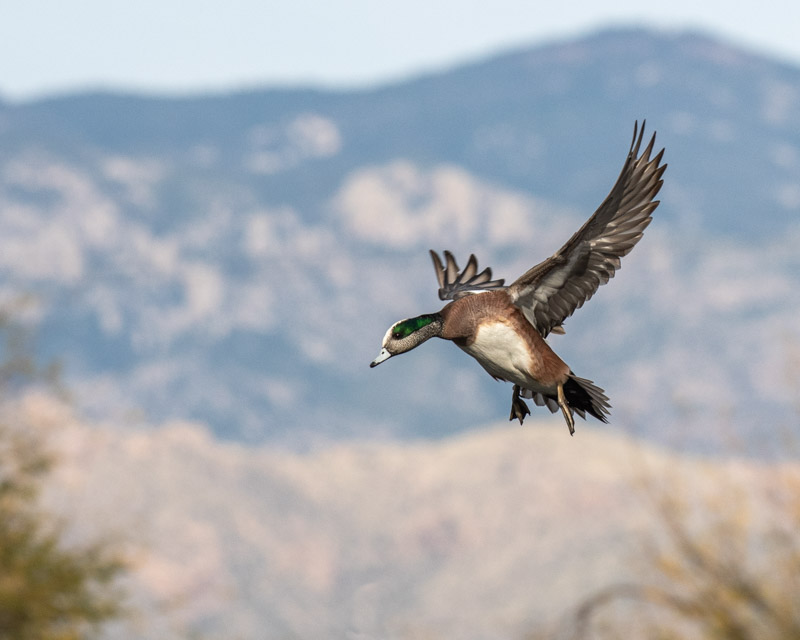
When I found the pond with Common Mergansers on it, they often were at the far end of the pond. And when I walked towards that end, they swam warily along the opposite edge to the end I had just left. Occasionally, they took the quicker route and flew.
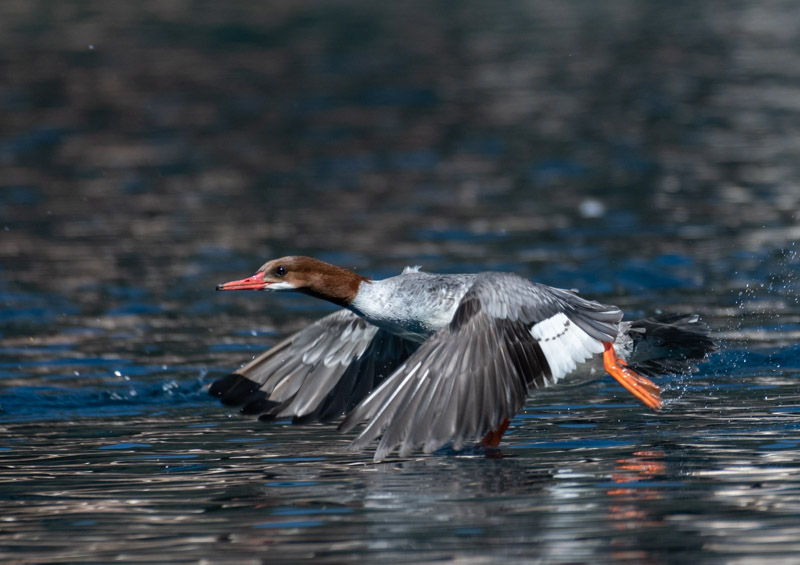
In the group of 22 Mergansers, they took off in small groups but with quite a splash as they flew right over the water.
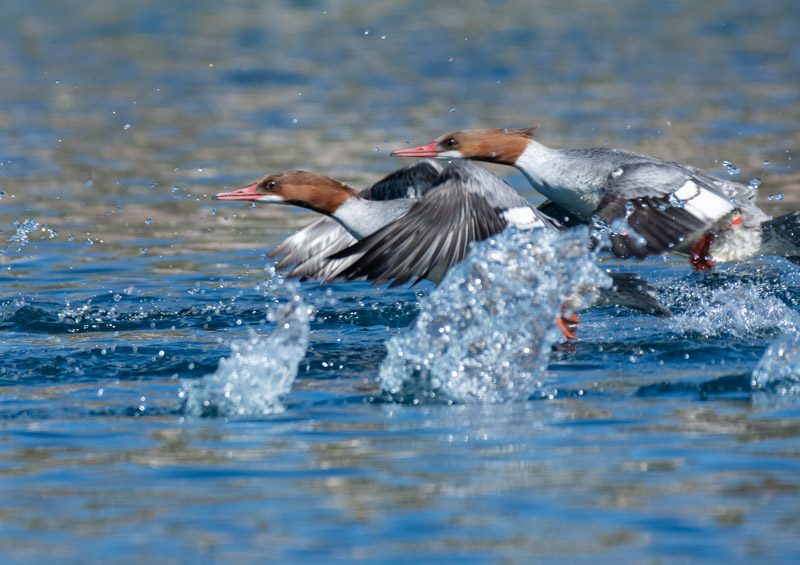
Common Mergansers are large ducks and when they landed, they did so with quite an impact. Reminds me of when, as a youngster, I made cannonballs into the pool every summer.
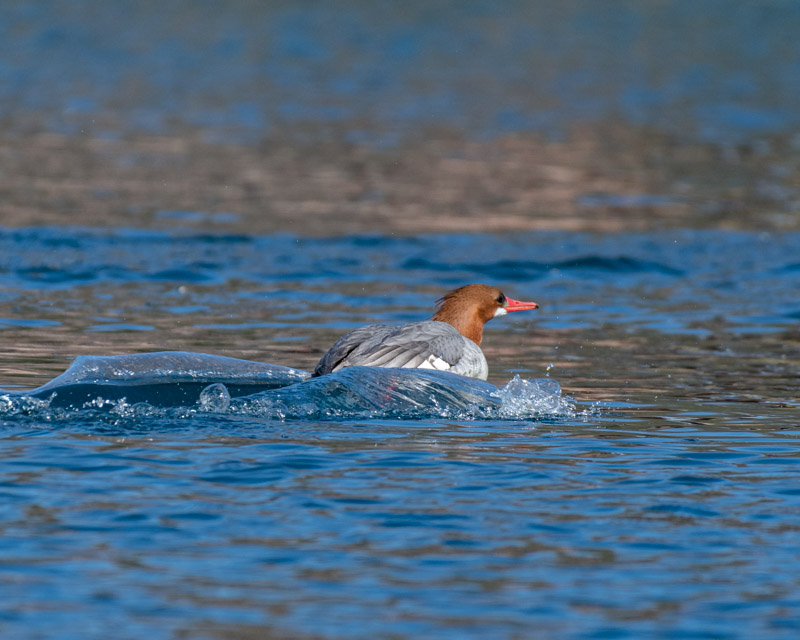
Finally, here are some American Wigeons in action. I visited the pond at Fort Lowell Park after lunchtime and saw a flock of these birds swimming around. I wasn’t anticipating anything special until quite a few of the ducks began a variety of what are called “comfort” behaviors. These include preening, bathing, shaking, wing-flapping, and stretching. Studies estimate that American Wigeons spend up to 10% of their time engaging in these behaviors. In real time they appear to be done very quickly with a blur or motion, but with my camera I was able to break down some of this behavior allowing us to see some very interesting details.
I like how this downward wing motion leaves a spray of water droplets in the air.
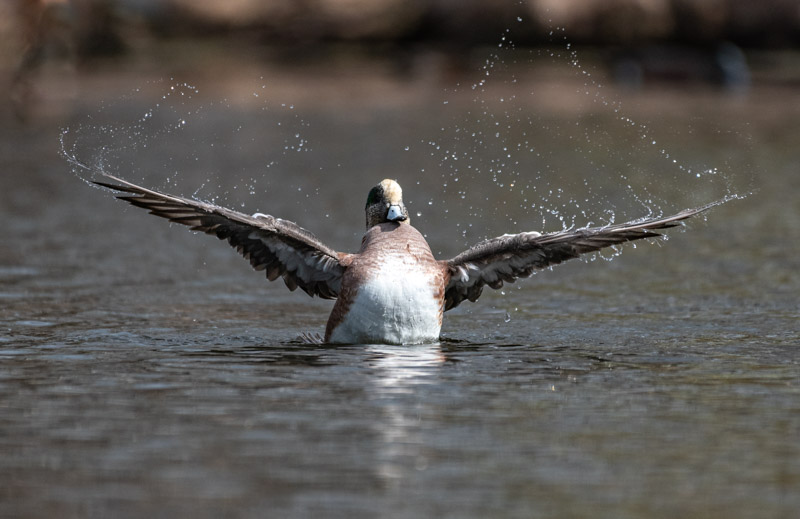
The birds rise up out of the water for wing stretches.
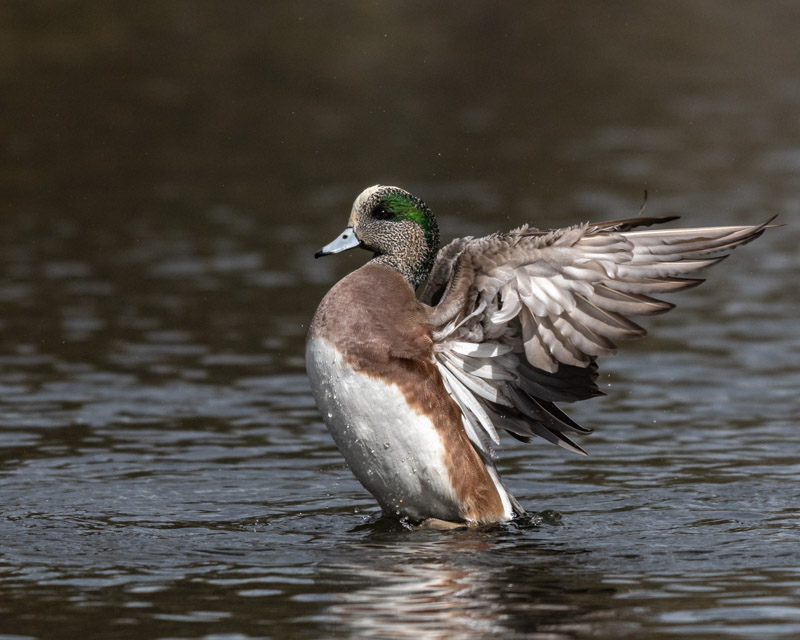
The pose below is very similar to the shot above, but you can see very different detail with many of the feathers spread apart from each neighboring feather. The photo above shows strength. The photo below shows beauty.
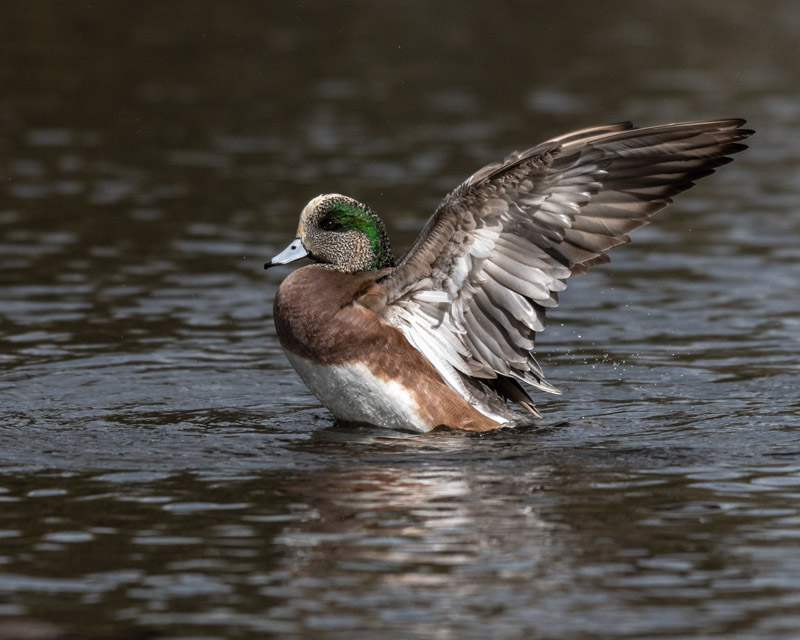
And here is my favorite shot of the day. This peek-a-boo capture shows each individual “primary” feather as the Wigeon begins to pull its wings backwards. There is a fine spray of droplets sparkling in the air around the bird.
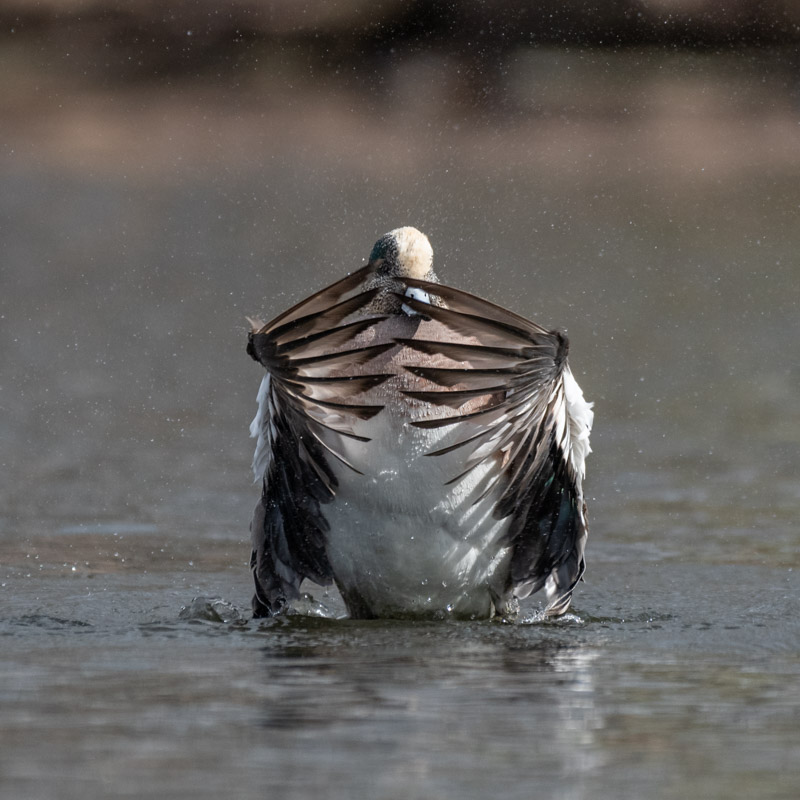
There is grace and beauty in the motion of the many waterfowl who visit us each winter.
